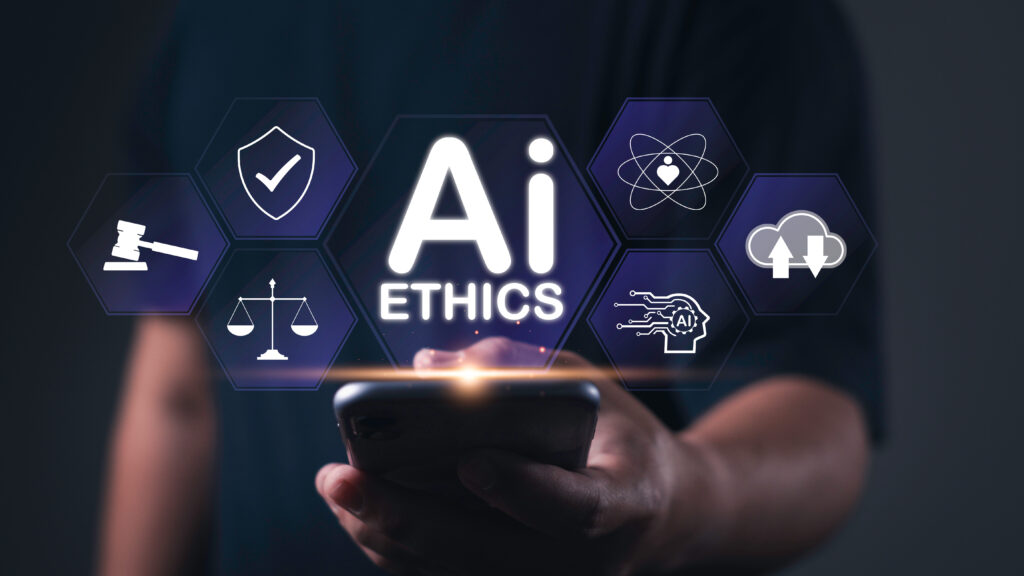Ethical AI: Designing Technology with Humanity in Mind

As someone who has spent years navigating both the sciences and education, I’ve developed a deep appreciation for the tension between innovation and responsibility. Nowhere is that tension more pressing—or more promising—than in the development of artificial intelligence. While AI has the potential to reshape entire industries and revolutionize how we live, learn, and work, […]
The Ethics of AI in Education: Who’s Watching the Algorithms?

Artificial Intelligence (AI) is changing the way we teach and learn. From personalized learning platforms like DreamBox and IXL, to AI-powered writing assistants like Grammarly and Quill, these tools are showing up in classrooms across the country—including in the Title 1 schools I work with. As an educator and developmental geneticist, I’ve seen how AI […]
Can AI Help Close the Learning Gap?

As an educator, I’ve witnessed firsthand the impact of educational disparities on students. Many of our learners face challenges outside of the classroom—economic hardships, lack of access to resources, and sometimes even systemic inequalities—that can make it difficult for them to thrive academically. Over the years, I’ve worked with students from all walks of life, […]
AI for Differentiated Instruction: Customizing Learning for Every Student

In today’s diverse classrooms, educators face the challenge of meeting the needs of students with varying learning styles, abilities, and backgrounds. Differentiated instruction—a pedagogical approach that tailors learning experiences to individual students—has long been a goal for educators striving to provide equitable access to education. However, implementing differentiation effectively can be complex and time-consuming. Fortunately, […]
Engaging and Affordable Chemistry Experiments for Regents Chemistry Classrooms

As a chemistry educator, I am always looking for ways to make science not only engaging but also accessible for my students—especially those in Title 1 schools. Teaching chemistry in a budget-conscious environment can be challenging, but the great news is that you don’t need expensive lab equipment to spark curiosity and enhance learning. With […]
Empowering Girls and Minority Students in Low-Income Schools through Computer Science Education

Computer science has the power to change lives. It opens doors to opportunities in fields that are not only lucrative but also critical to driving innovation and progress in our world. However, when we look at who is benefiting from these opportunities, a clear gap emerges. Girls and minority students, especially those in low-income schools, […]
Cerebellum-Inspired Teaching Strategies for Teaching Computer Science to Diverse Learners

As an educator with a background in developmental genetics and a strong belief in the power of inquiry-based learning, I’ve witnessed firsthand how diverse students can thrive when teaching strategies align with their unique learning needs. One area that has captivated my attention is the cerebellum, a part of the brain traditionally associated with motor […]
Simulating the Mind: Using Computer Science to Explore the Brain and Beyond
As an educator passionate about both science and technology, I’m always looking for innovative ways to connect students to real-world applications. One area that has captured both their curiosity and mine is the study of the brain through computer science. The human brain is the most complex “computer” we know, and thanks to advancements in […]
AI in Everyday Life: Teaching Students About Artificial Intelligence’s Role Beyond the Classroom

Artificial Intelligence (AI) might sound like a complex and technical concept best left to scientists and engineers, but the reality is that AI has a growing presence in our everyday lives. Helping students understand AI’s influence in ways that are engaging, relevant, and easy to grasp is increasingly important. In a world where everything from […]
App Design for Social Good: Empowering Students to Solve Real-World Problems through Computer Science

In today’s digital age, computer science is no longer just about writing code—it’s about using technology as a tool to solve real-world problems. As an educator in a Title 1 school, I have had the privilege of teaching computer science and app design to students from underserved backgrounds, and it has been transformative for both […]